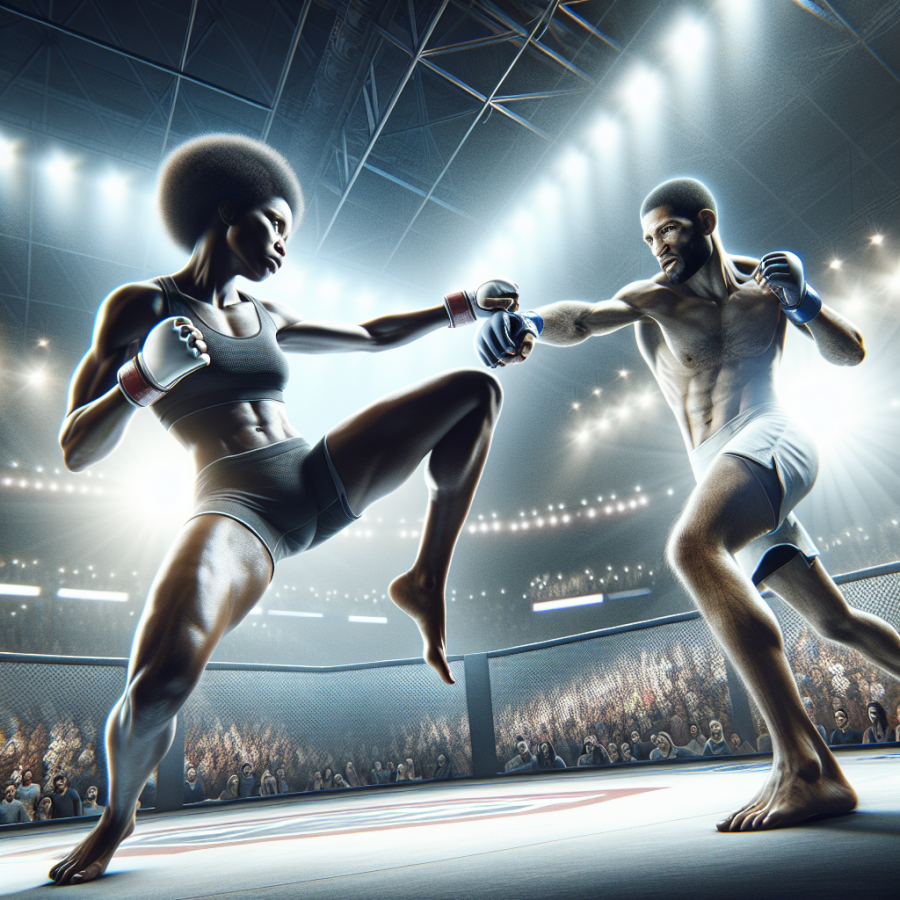Unveiling the Complex Techniques of Mixed Martial Arts
Mixed martial arts, also referred to as MMA, is a cocktail of different fighting styles. Due to its thrilling and unpredictably fast nature, it has quickly become one of the most popular fighting sports worldwide. It is an intense form and discipline that requires comprehension of perhaps the broadest set of fighting techniques of any combat sport.
Understanding the hierarchy and the intricacies embedded within MMA often means delving deep into a wide array of complex disciplines. While the sport certainly includes the classic western boxing and wrestling techniques, MMA fighters are also proficient in less familiar forms such as Brazilian Jiu-Jitsu, Muay Thai, and other previously region-specific martial arts.
Brazilian Jiu-Jitsu, the ground-fighting system popularized in MMA by the Gracie family, emphasizes submission with a focus on maintaining proper position. The objective is to put the opponent on his back and apply a variety of chokeholds and joint lock techniques to secure a submission. Brazilian Jiu-Jitsu is often regarded as the most crucial discipline in MMA, as a significant number of matches stoppage occurs on the ground.
The grappling art of wrestling is also a significant advantage in MMA, especially for controlling where the fight takes place. With good wrestling techniques, fighters can dictate whether the fight stays standing or goes to the ground, giving them a strategic advantage. Wrestling techniques involve takedowns, including single leg or double leg dives, and throws to take the opponent off their feet.
Muay Thai, or the "art of eight limbs," is a striking discipline which amplifies a fighters’ striking arsenal by using the fists, feet, elbows, and knees. It is recognized for its powerful kicks, knee strikes, clinch work, and devastating elbow strikes, which can be particularly useful tools during standup combats. Mastery over Muay Thai allows a combatant to clinch and deliver impactful strikes, or create distance for high-power kicks.
Boxing, another integral discipline in MMA, focuses on punching techniques, head movement, and footwork. A well-conditioned boxer can use the simplicity of their training to their advantage in an MMA context, utilizing footwork to control distance, strong jabs to maintain that distance, and hard crosses, hooks, and uppercuts to finish the fight.
Incorporating all these techniques and disciplines into an individual MMA style is no easy feat.
Read also:
Understanding the Rules and Charm of Cricket: A Comprehensive Guide
Exploring the Rich Culture and Tradition of MMA
Mixed martial arts (MMA) is not just another sport. It is a fascinating blend of numerous combat sports and martial arts traditions from around the globe. This blend creates a unique culture and tradition, characterized by its appreciation for skill, discipline, respect, and competitive spirit, making it more than just physical competition.
The roots of MMA can be traced back to ancient times, with pankration in ancient Greece and gladiatorial contests in ancient Rome serving as historical examples. Over time, various types of combat sports from different parts of the world have been incorporated into MMA. This includes techniques from Brazilian Jiu-Jitsu, Muay Thai from Thailand, Judo from Japan, and Boxing and Wrestling from the west. Each of these martial arts has its own rich history, unique techniques, rules, and culture, all of which are respectably represented in MMA.
Each martial art has its own set of philosophies and traditions that contribute to the culture of MMA. For instance, the discipline and respect for the opponent that stems from Judo, or the ruthless pragmatism and devastating power of Muay Thai. The combination of these philosophies creates a unique culture and mindset within the fighters and the sport itself.
Respect is one of the paramount values in this sport. Despite the violent nature of MMA, fighters typically respect their opponents, uphold the martial arts tradition of respect for an adversary, and demonstrate sportsmanship. This is evident in their behavior during weigh-ins, press conferences, and pre and post-fight ceremonies where fighters bow, touch gloves, or even embrace, signifying mutual respect.
Another significant part of MMA culture lies within the concept of honor. Much like in traditional martial arts, honor in MMA is about maintaining one's integrity both in and outside the ring. It involves showing humility, taking responsibility for one's actions, and accepting defeat gracefully when the time comes.
Discipline, another cornerstone of the MMA culture, involves rigorous training regimes and strict adherence to techniques. Fighters often train for several hours a day, mastering various martial arts techniques. This disciplined approach extends beyond the physical training, involving mental preparation and character building.
One cannot forget the role of the MMA community in shaping its culture. The community comprises fighters, coaches, fans, and organisations like the UFC that work collectively to promote the sport. The community plays a significant role in shaping the sport’s rules, promoting events, and encouraging a culture of respect and fair play.




